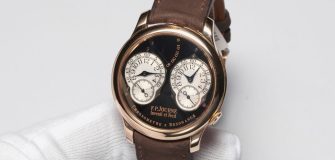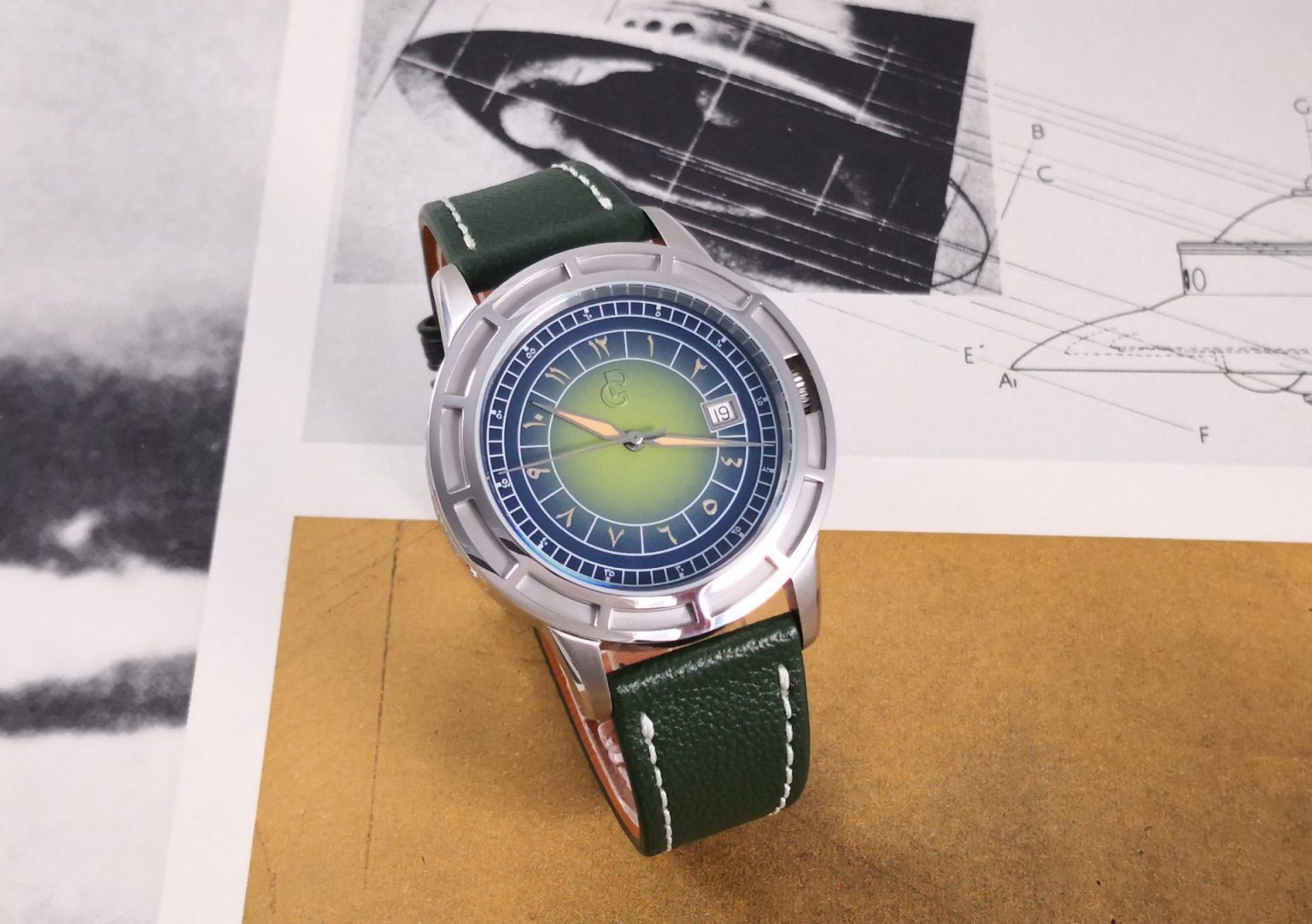A Horological Tribute to the Master of Light: Vacheron Constantin Les Cabinotiers Westminster Sonnerie – Tribute to Johannes Vermeer
Share

Vermeer’s most famous painting is now part of a bespoke single-piece edition. The Les Cabinotiers Westminster Sonnerie from Vacheron Constantin is powered by a new 806-part manual winding movement, regulated by a tourbillon and comprising grande and petite sonnerie Westminster chimes, coupled with a minute repeater.

Johannes Vermeer (October 1632 – December 1675) painted the pearl earring with only two strokes of white paint. It took a lot more to create the new Les Cabinotiers Westminster Sonnerie – Tribute to Johannes Vermeer. Vacheron Constantin’s Ref. 9910C/000J-B413 was created at the request of a collector for whom “passion lies in always seeking that which is theoretically impossible to obtain.” The project started in 2013 and took the team eight years to complete.
It’s not surprising that the 98-mm pocket watch is also equipped with a new in-house movement, Calibre 3761, which was specially developed by the same team of watchmakers that was already responsible for the Ref. 57260 introduced in 2015, featuring 57 complications. This new 806-part manual winding caliber with tourbillon regulator features grande and petite sonnerie Westminster chime mechanisms coupled with a minute repeater. “I had long dreamed of having a real Westminster chime pocketwatch in my collection striking five gongs with five hammers, featuring a grande and petite sonnerie and adorned with miniature enamel.” Such was the thinking of the client who has commissioned this model, leading to the creation of Calibre 3761 measuring 71 mm in diameter and 17 mm thick. It is regulated by a tourbillon placed on the lower part of the movement, visible through the caseback and performing one full revolution per minute. The tourbillon is driven by a 2.5-Hz balance (18,000 vibrations per hour).

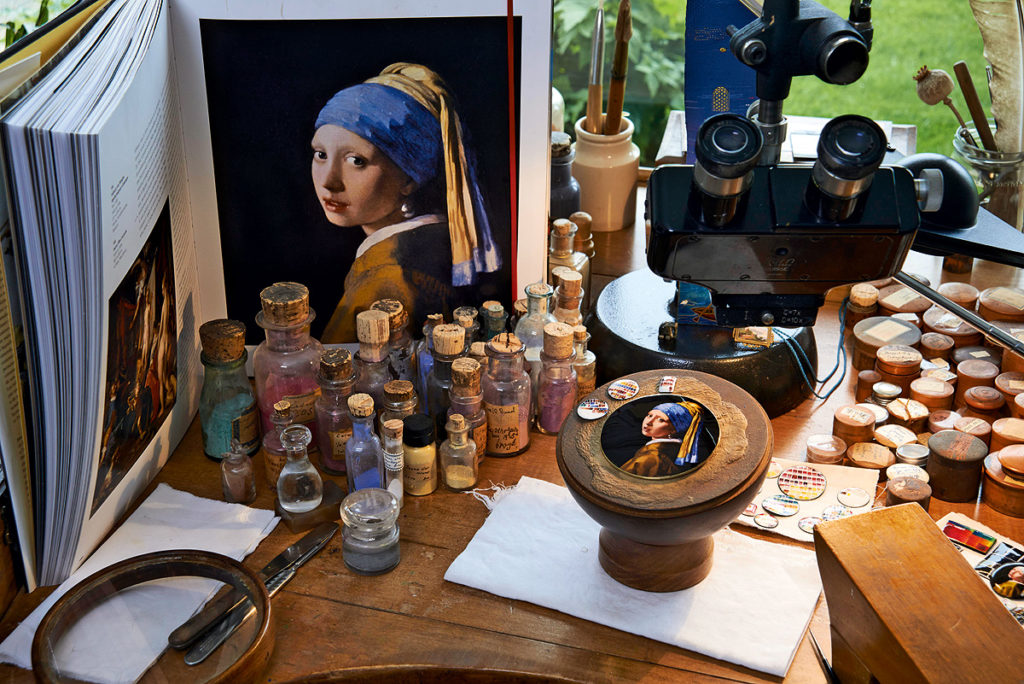
The Westminster chime is considered one of the most complicated striking mechanisms to build, as it requires a sequence of five gongs struck in perfect harmony by their respective hammers controlled by four racks. In wristwatches, grande sonnerie (grand strike) mechanisms are usually operated by a single rack, mainly for reasons of miniaturization. The four rack and snail solution, with four racks for the hour and quarter chimes and one rack for the minute repeater, enhances the sequencing of the melodies and, as an added subtlety, enables different melodies to be played when passing the quarters.
First tested before being cased-up, the gongs are shaped in such a way as to obtain the right note for each of them. This requires touching up with a file to achieve a perfect sound. There can, however, be surprises once the chiming mechanism is cased up. According to Vacheron Constantin, two of the five original gongs had to be replaced for the sake of harmony. By modifying the steel alloys, the sound of the two new gongs acquired a more crystal-clear tone, entirely in tune with the other three.
Vacheron Constantin’s Calibre 3761 is equipped with a centripetal strike governor ensuring perfect regularity of the musical sequences, of which “the notes must be both distinctly audible and pleasing to the ear.” The system is characterized by a pair of weights whose very special shape has been optimized so as to generate a kind of “engine-braking effect” — by centripetal force — on the regulator’s pivot axis, thereby evening out the energy released by the barrel. This unique and original device is also perfectly silent, according to Vacheron Constantin. In another special feature regarding the flow of time, the caliber houses a double-wheel system with clearance adjustment. Given the size of the hands, in order to avoid any potential jerking of the seconds hand positioned at 6 o’clock, such a mechanism ensures its smooth flow thanks to a system based on two co-axial toothed wheels linked by a spring serving to eliminate gear play.
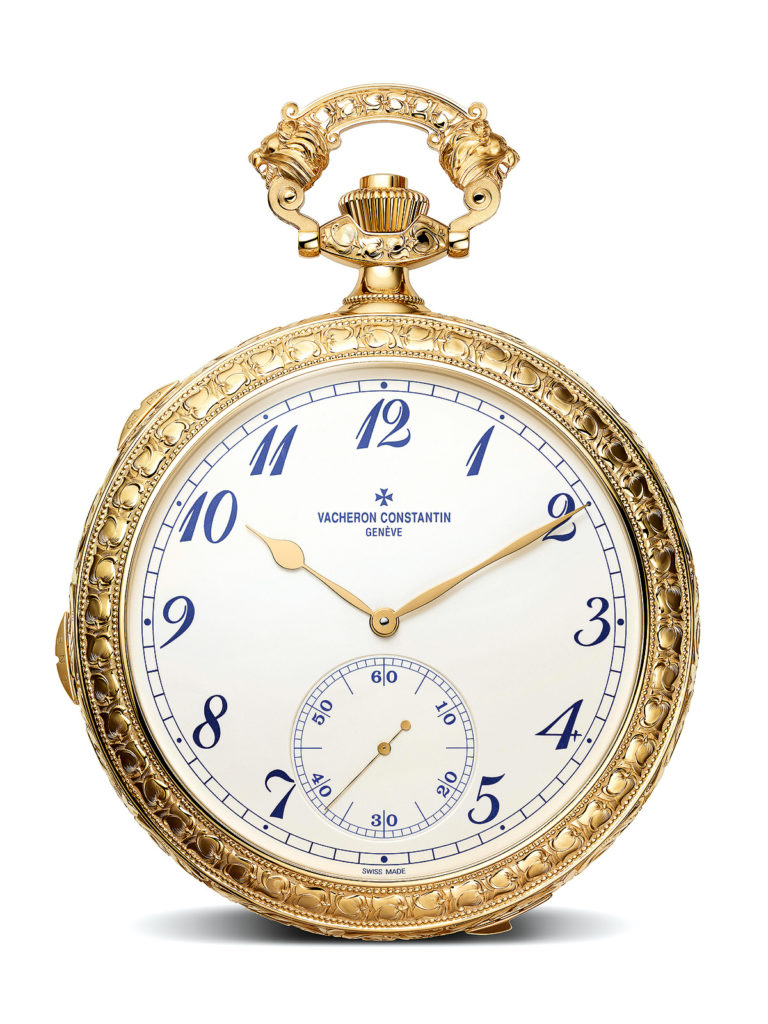
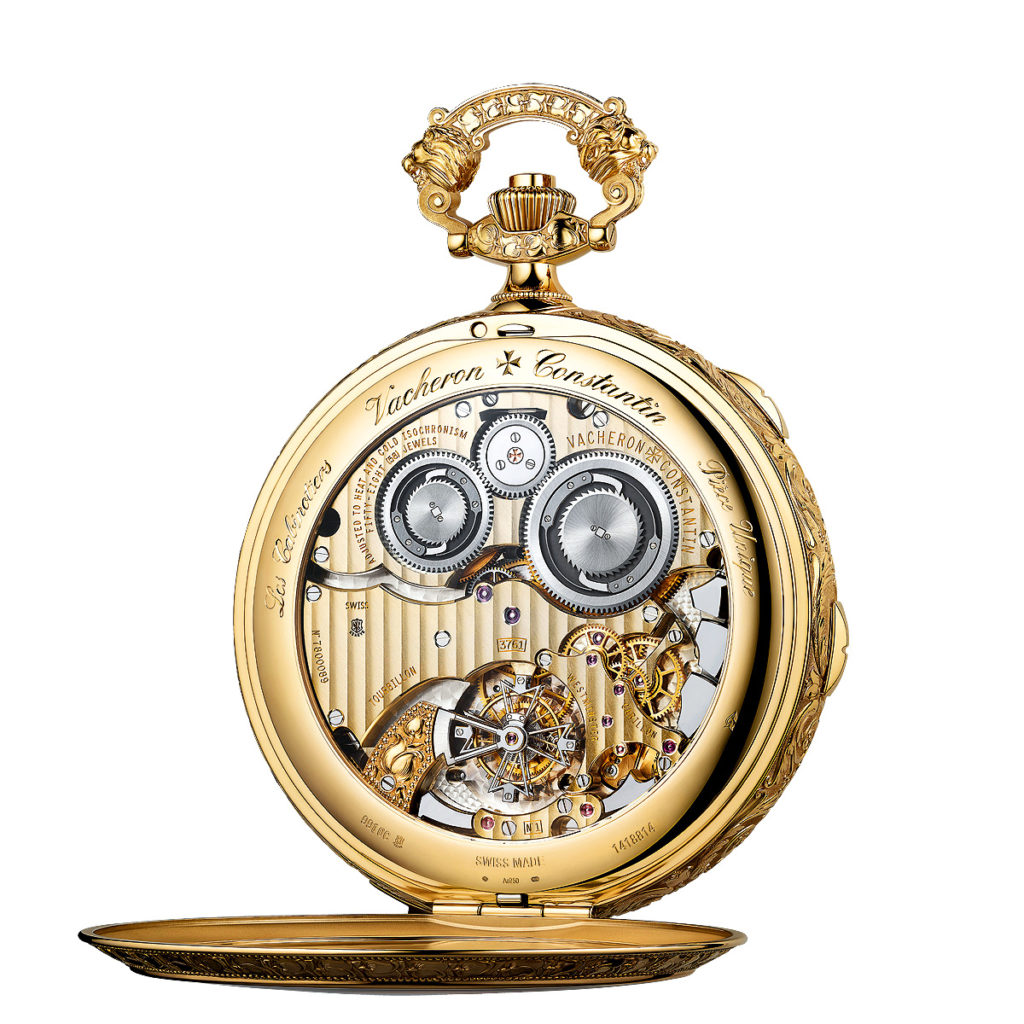
In “Sonnerie” (strike) mode, the watch is automatically activated each time the quarters change, like a clock. In “Night Silence” mode, a special feature specifically developed and adapted to this 3761 caliber, according to the time zone chosen by the owner, the alarm is deactivated between 11 pm and 9 am. The third and last “Silence” mode completely suspends the striking mechanism. A second selector, positioned between 10 and 11 o’clock, serves to switch from grande sonnerie to petite sonnerie as preferred. The two barrels ensure autonomy of approximately 16 hours for the musical mechanism in “Grande Sonnerie” mode and 80 hours for the time indications, with stable torque guaranteed until the end of the power reserve.
An additional difficulty with this single-piece edition was that it was impossible to case up the entire finished movement, and part of the final assembly had to be done directly inside the case. Given the level of finishing and decoration of each component, including the case, as well as the fact that any handling manipulation could potentially impair the quality, the 10 operations involved in fitting the caliber — which had to be removed the same number of times for retouching — followed by the final assembly required an uncommonly deft touch. In the end, a very small team of specialized watchmakers conducted the making of this Calibre 3761, from the development, manufacturing and finishing of the various components to the final assembly and casing-up of the movement.
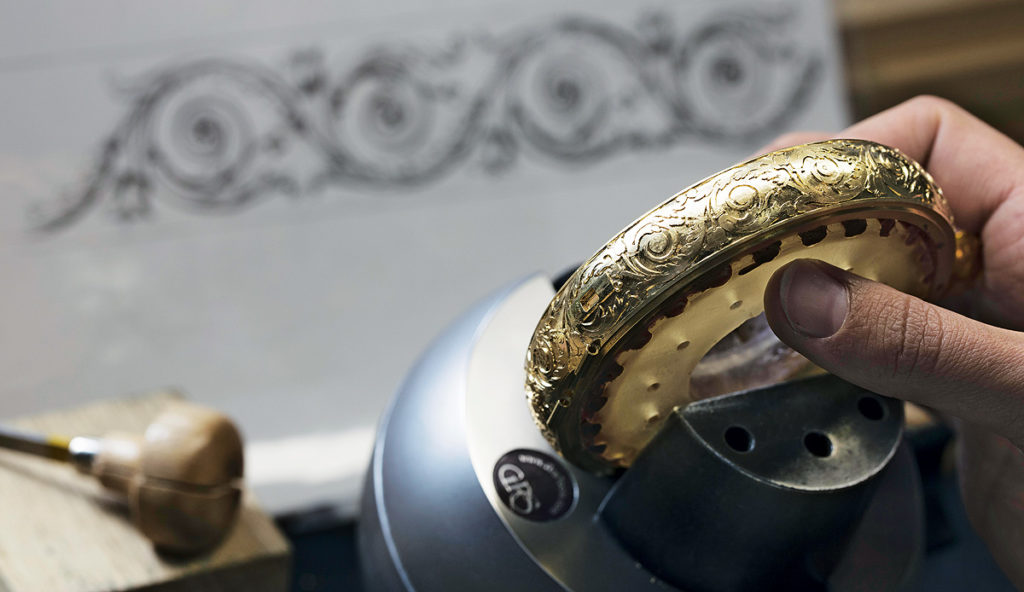
All the movement components are hand-finished – from the completely engraved balance bridge to the bridges buffed with diamond paste to achieve a mirror-polished finish, as well as the galvanic treatment of the plates adorned with côtes de Genève and featuring a soft champagne color. The work on the ratchet wheel and the two barrel wheels alone took a full week to decorate.
The officer-type caseback cover features a miniature enamel painting, finely crafted using the Geneva technique. The case sides are decorated with hand-engraved friezes composed of acanthus leaves and tulips, accompanied by a “pearl” rim, while the bow is adorned with two roaring lion heads carved from a block of gold. A total of five months of extremely meticulous craftsmanship was required to engrave and sculpt the various elements of the pocketwatch.
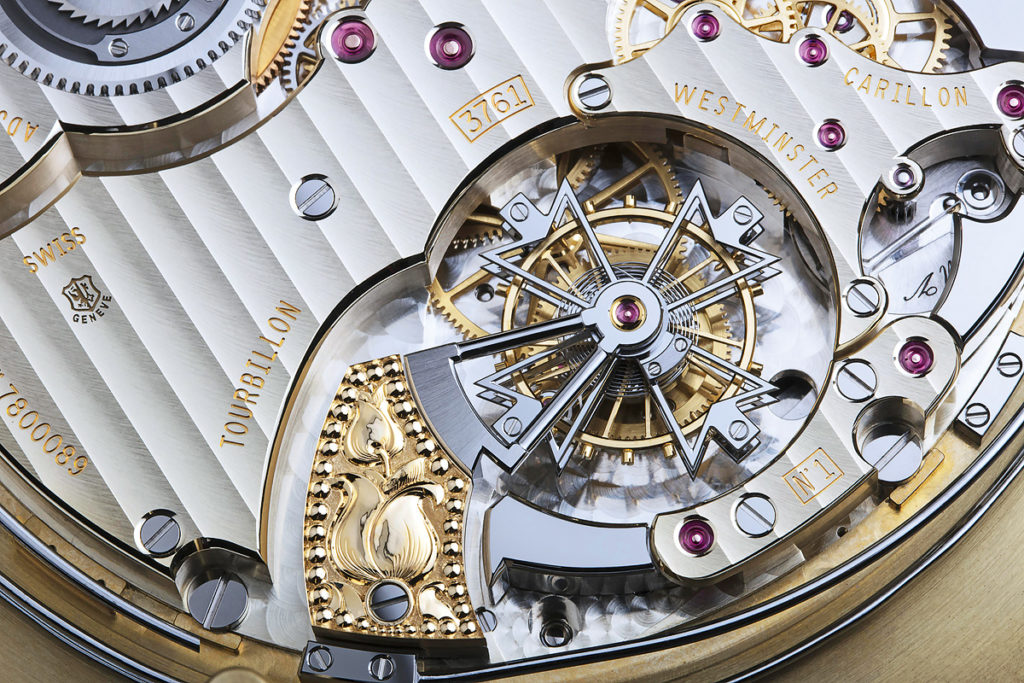
The client had asked that the cover of the officer-type caseback should feature a miniature enamel painting by enameler Anita Porchet. The independent enamelist has already worked for numerous watch brands over the last two decades, and has won numerous prizes for her work in enameling and miniature painting. The work ultimately chosen was Girl with a Pearl Earring, one of the world’s most recognizable paintings.
Next to the challenge of reproducing the work of a great master, the size of the 98-mm-diameter surface implied additional difficulties. This size of watch, corresponding more to that of historical carriage watches than to a pocket model, requires a degree of dexterity all the more accurate in that the slightest irregularity is glaringly obvious. The result is reminiscent of the grand miniature enamel painting tradition in which Geneva came to specialize. Today, only a few rare enamelers still master these techniques. Porchet spent seven months of intermittent work to bring this portrait to life. The research and development work — notably relating to the pigments and enamels to be used — began in 2018 and the final result was completed in 2020 (the main watch dial is grand feu enameled in an eggshell color with blue enameled Roman numerals).
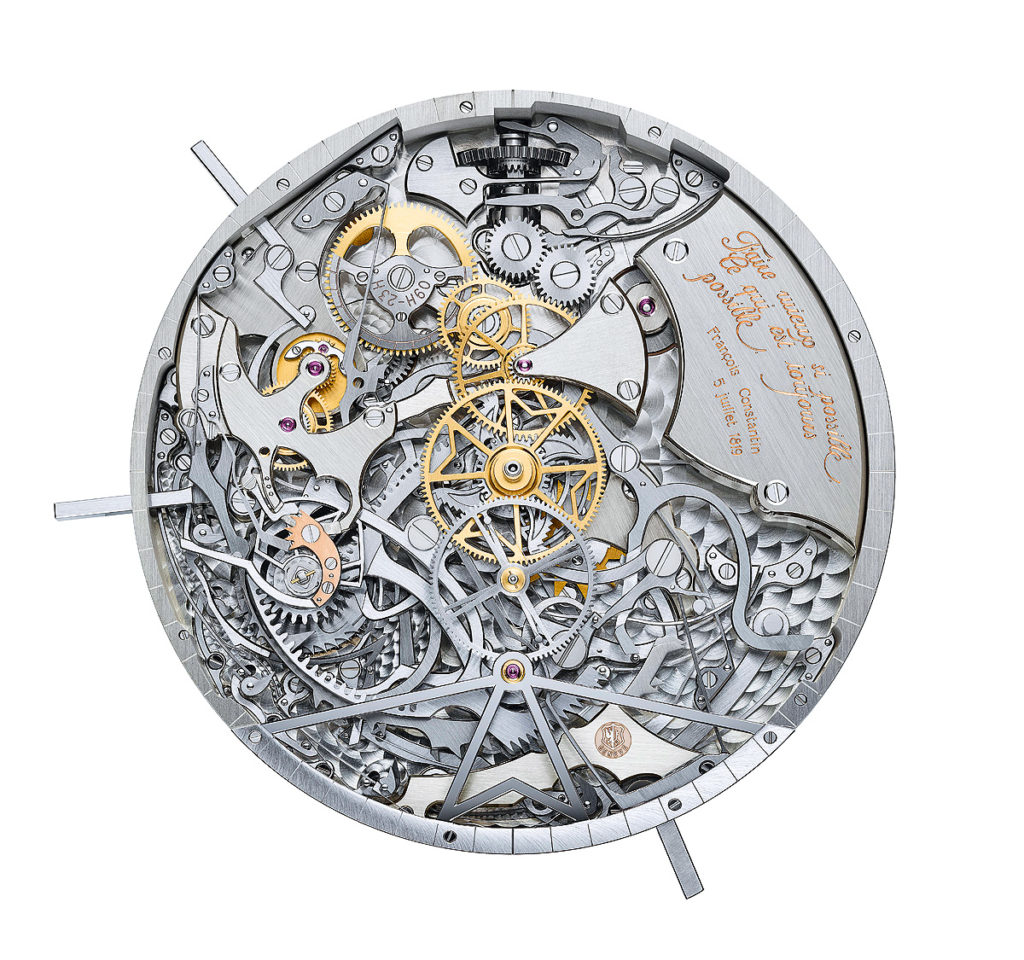
An observant and deliberate painter, Vermeer produced only few known works in his lifetime. His most famous painting, Girl with a Pearl Earring, inspired not only a best-selling novel and Oscar-nominated film but now also a horological masterpiece.













